Correct crocus cultivation at home
Crocuses are one of the first to appear from under the snow to please with their flowering. Crocus also has another name - saffron. It is from this plant that the seasoning of the same name is produced.
Content:
- Spread
- Crocus care
- Crocus propagation
- Landing
- Top dressing
- Forcing bulbs
- Diseases and pests
- Application
Coloration crocuses can be varied. You can see blue, white, blue or purple as well as bicolor crocuses. They bloom for about 3 weeks.
Spread
In the wild, crocuses are found in North Africa, Asia, Central and Eastern Europe, in the Mediterranean, in the Crimea, in the Caucasus.
Many of the species are on the verge of extinction and are members of the Red Book.
Crocus care
Growing crocuses at home cannot be called difficult, but at the same time it includes the observance of a number of important conditions.
The crocuses shown in this image love bright, diffused lighting, well-drained soil, and moderate watering. Moreover, your main task is to provide conditions that resemble the natural habitat as much as possible.
Before growing crocuses at home, you need to choose the right flower varieties. So, the least problems will be with Dutch hybrids. By the way, even several flowers can appear from one bulb.
There is no need to cover crocuses for the winter, as they can withstand frost perfectly. Crocuses are not very demanding on moisture. But if the spring is too dry, then the plants will have to be watered. With a lack of moisture, the growth of crocuses is delayed. In summer, crocuses are at rest. Therefore, there is no need to water them.
Crocus propagation
The most common and most effective method of propagation is propagation with daughter bulbs.
Crocuses, which are dependent on planting flowers at home, should ideally bloom at the same time. To achieve this result, choose crocus bulbs of the same size and variety, heavy and dense, with a solid shell and sprouted shoots and roots.
They buy planting material in August-September. They are planted in the ground in early September. Bulbs are transplanted in the summer, after the leaves turn yellow.
Seed reproduction is also possible. The seeds can be sown in spring and fall. In the fall, they are immediately sown, and in the spring, preliminary stratification is required.
Landing
Choose a sunny place for planting, otherwise you will not see flowers.
When planting bulbs, make sure that they do not come into contact with each other and with the pot. The container should be wide and shallow. Crocus care at home it will be much easier if you give preference to neutral and light soil that is highly water permeable. Add a little sand to the potting mix.
Broken brick or special expanded clay drainage is laid at the bottom of the pot. As a last resort, you can use sand or gravel. Only then pour the prepared substrate into the container. The acidic soil is not suitable for saffron.
In general, growing crocuses in the open field and in a pot has a lot in common.But still, you need to take into account a number of features on which the successful and abundant flowering of a houseplant at home depends.
Top dressing
During planting, the plants do not need fertilization.
During flowering, crocuses are recommended to be fertilized with phosphorus fertilizers, and after flowering with potash fertilizers. It is undesirable to apply nitrogen fertilizers: they disrupt the development of plants. Fresh manure should not be used as fertilizer. It promotes the development of fungal diseases, which leads to the death of the crocus.
Forcing bulbs
Only high-quality bulbs are selected for forcing. In the first half of autumn, they should be planted in pots and covered with polyethylene bags. Ventilation holes are made in the bags. The pots are placed in the refrigerator or in the basement.
After the sprouts appear (in January), the pots are transferred to a room where the temperature should be maintained at + 10-15 degrees. The pots are shading. After 7 days, crocuses must be opened. Backlighting is desirable.
When the buds bloom on the crocuses, the flowerpots are transferred to a warm room. But too high a temperature is undesirable: then the flowering time will be shortened.
In autumn, faded bulbs are planted in open ground.
Diseases and pests
Crocuses are threatened by various pests. Among them, the first place belongs to slugs and caterpillars. Also, birds, nematodes, hares, moles and mice pose a significant danger.
The most common diseases are chlorosis, rot, leaf rust, fungal and viral diseases.
Application
Crocus is mainly used as an ornamental plant. Crocuses look beautiful on alpine slides. They are perfectly combined with conifers.
Crocuses are used in cooking. They are used to prepare the famous seasoning and food coloring - saffron, as well as various delicious dishes.




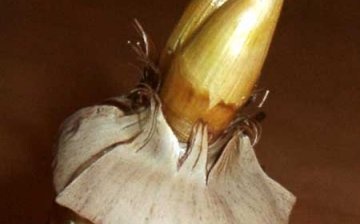
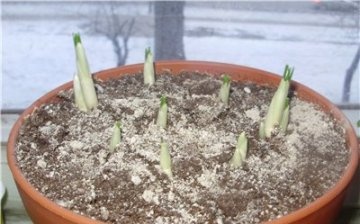
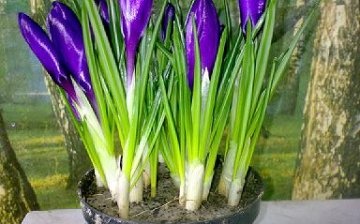




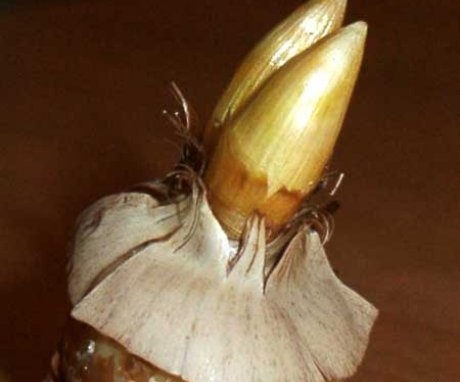
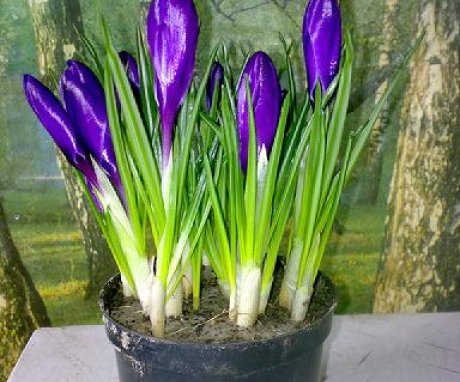
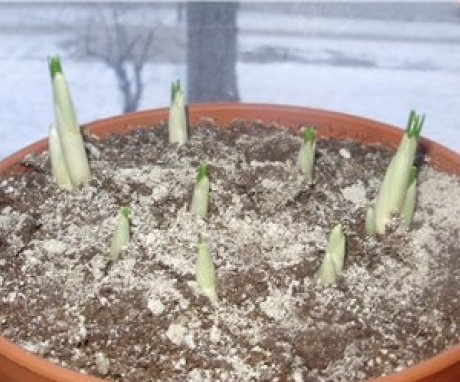
You don't have to put them in a pot. We planted the bulbs in the fall and the crocuses bloomed safely in early spring. They multiply so quickly that after 2 years, up to 4 small onions can be found in one hole at once.